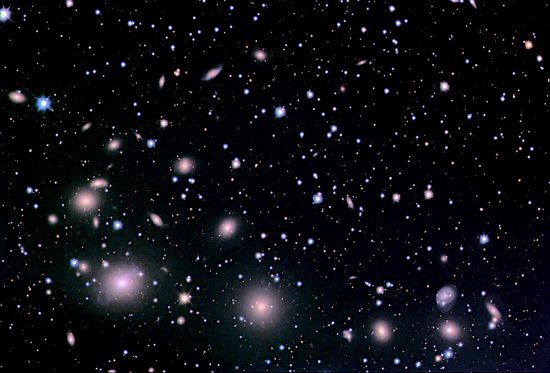
Apr 25, 2019
Galaxies are electromagnetic.
Electric Universe theory sees galactic evolution as large-scale plasma discharges that form spinning wheels composed of coherent filaments. Those galactic structures display electrodynamic behavior and are not merely gravitationally bound assemblies of isolated stars.
Stars in galaxies can form along arcs like silver beads on a string. Nebular contraction theories about star birth are inadequate when it comes to explaining star formation, especially coherent alignment. Ad hoc addenda are always needed to account for “mysterious” observations. Beyond that, the great galactic clusters exceed any conventional definition.
A recent publication announces that magnetic fields in galaxies stretch beyond the limit of their disks into intergalactic space. Just as Earth’s magnetic field surrounds the planet, galactic fields also surround their parent formations. Astronomer Ralf-Jürgen Dettmar wrote:
“It had previously been assumed that the magnetic fields are trapped in the disc.”
The surprise is because galactic magnetic fields are supposed to arise from supernovae over millions of years. Conventional astrophysicists think that electrons are accelerated by those stellar explosions, spiraling in the magnetic fields and emitting radio frequencies. It is those chaotic explosions that are said to generate coherent magnetic fields, thus the mystery.
Dettmar: “The truly surprising aspect was: the magnetic fields of the first galaxy we’d studied present a regular structure on the large scale.”
In an Electric Universe, plasma makes up 99% of all that is observed. When electricity moves through a cloud of dust and gas, the cloud becomes ionized, initiating an electric field and electric charge flow. Electricity creates electromagnetic fields that tend to align and constrict the charge flow. Those fields create Birkeland currents. Birkeland currents are electromagnetic filaments that carry electric charges through space. They are layers of charge separation, isolating regions of opposite charge and preventing them from neutralizing.
Galactic circuits radiate energy, so they must be coupled with larger circuits. How large those circuits are is illustrated by the fact that galaxies also occur in strings. The strings are Birkeland current filaments millions of light years thick and billions of light years long, out of which groups of galaxies are “pinched”. The visible Universe could be one braided filament extending from the Virgo supercluster to the Fornax supercluster across billions of light years. That power line carries electric currents beyond anything we can imagine, energizing the galaxies.
Stephen Smith












